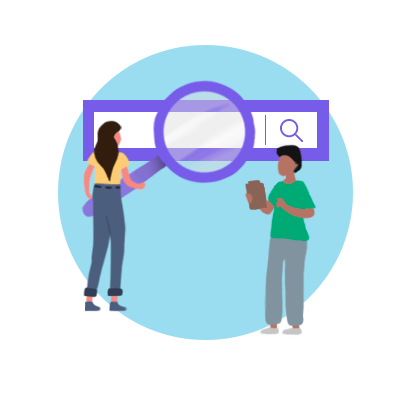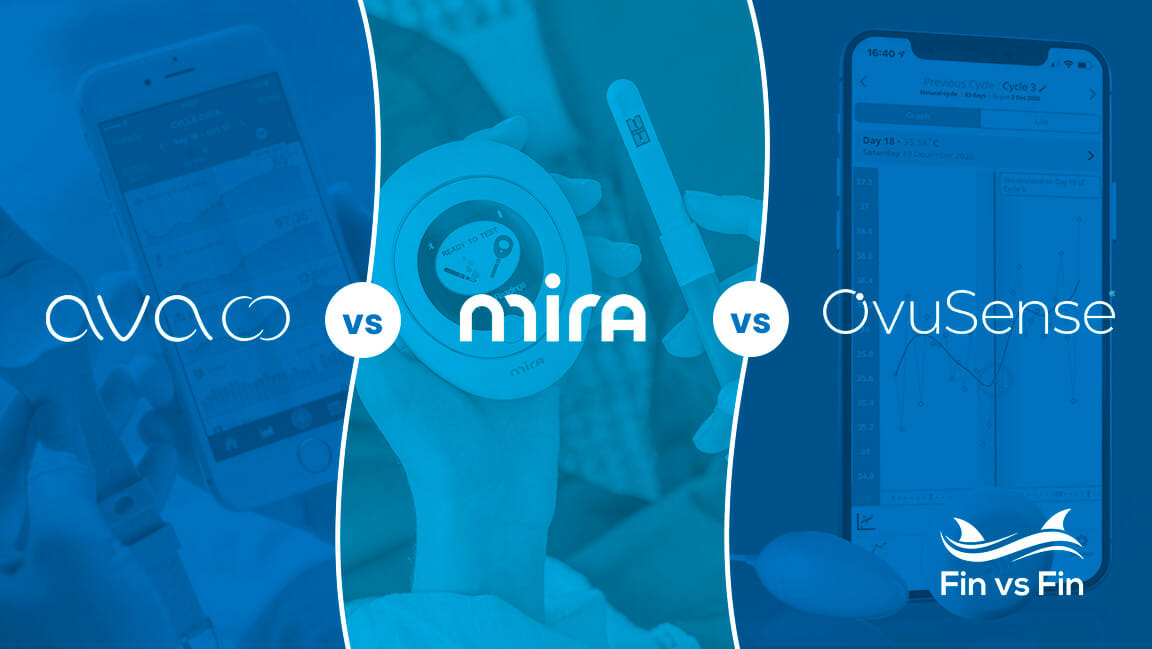In this review, we’ll compare ovulation trackers by Ava, Mira and OvuSense to help you decide if a new, technology-enabled ovulation tracker can help you get pregnant.
There’s an optimal window of 4 to 7 days each month to try to have a baby. Sounds simple enough — all you have to do is, you know, get it on during those days. But if you’ve struggled to conceive, you know it’s actually a lot more complicated than that. And the first, surprisingly-hard thing to figure out is when those days are each month.
According to the American Pregnancy Association, ovulation for most women occurs anywhere between day 11 to day 21 of their menstrual cycle. That’s a ten day window…which is huge if you are trying to get the timing perfectly right. Ovulation can occur at various times during a cycle, potentially on a different day each month, making things more complicated than it seems.
Ovulation is divided into two phases: the follicular phase and the luteal phase. The follicular phase starts on the first days of the last menstrual period (LMP) and continues through ovulation. It can differ greatly for every woman and last from 7 – 40 days. The second half of the cycle is called the luteal phases which begins the day of ovulation until the next period begins. This phase is a bit more precise and is usually only 12-16 days from the day of ovulation.
But of course, all women’s cycles are different. They can be irregularly short or long, include unstable hormones, or even Polycystic Ovarian Syndrome (PCOS). With these irregularities, optimizing the timing for conception can be tricky. Fortunately ovulation trackers have become affordable enough to allow you to know exactly when your fertile and infertile days are coming up next. Aspiring mothers now have a number of technology-driven options. Let’s review three of the most popular ovulation trackers on the market: Ava vs Mira vs OvuSense.
So which ovulation tracker is the best: Ava, Mira, or OvuSense?
When it comes to conceiving, you want to be sure that you are using the tracker that will work best for you and your body. Fortunately, you have a variety of options to choose from with Ava, Mira, and OvuSense. Beyond the cost differences, there are some meaningful differences in how these devices track and estimate your fertility, ranging from a bracelet, to a urine test, to a vaginal sensor. Let’s dive into how each of them could work for you!
Best Ovulation Trackers: Mira vs Ava vs OvuSense | |||
|---|---|---|---|
| Starting Price | $259 (Or $50/month) | $199 (Or $33/month) | $299 for an annual subscription $129 for 2-months Use code FINVSFIN20 for 20% off |
| Device / Hardware | Ava Fertility Bracelet | Mira Analyzer + 10 Urine Test Wands | Vaginal Sensor |
| Cycle Tracking and Ability to Identify Fertility Window | ✔️ | ✔️ | ✔️ |
| Measures Hormone Concentrations | ❌ | ✔️ | ✔️ |
| Tested for PCOS | ❌ | ✔️ | ✔️ |
| Advance Ovulation Prediction | ❌ | ✔️ | ✔️ |
| FDA/CE Registered | ✔️ | ✔️ | ✔️ |
| FSA/HSA Qualified | ✔️ | ✔️ | ✔️ |
| IOS/Android compatible app | ✔️ | ✔️ | ✔️ |
| Website |
As you can see, each has their own way of measuring ovulation and tracking fertility. And they all have apps for your phones, making it easier for you to know how your cycle is progressing. Now that we have broken down the trackers by Mira, Ava and Ovusense, let’s explore them each in a bit more detail.
Review of Ava Bracelet
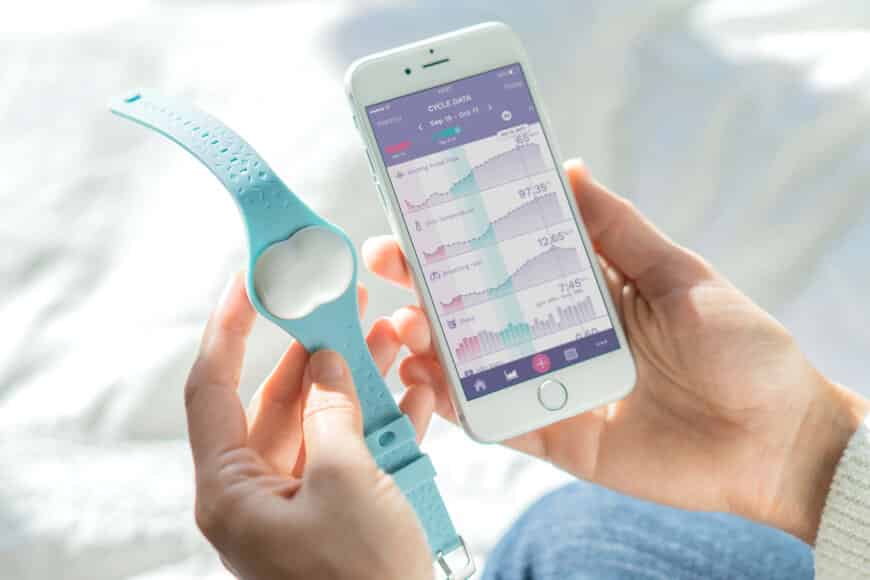
Ava has been pushing to make advancements in the field of women’s health through their flagship product, the Ava bracelet. The company has published a few clinical studies in peer reviewed journals (one example here) that have shown that it can be used to detect and track physiological signals that indicate the most fertile days for a woman in a month: skin temperature, resting pulse rate, heart rate variability, perfusion and breathing rate. We like the fact that Ava is getting real scientific research conducted on their product; the study we looked at was legit, but we’d love to see more research on a larger test group of women.
How does Ava’s ovulation tracking bracelet work?
With Ava, all you have to do is wear the adjustable ovulation bracelet at night and select your tracking mode: fertility, cycle, or pregnancy. When you wear Ava at night, the sensors in the device collect data 25 times a second. In the morning, when you wake up, you sync the bracelet to the Ava app on your phone. That information is then used to calculate your fertility window, and it will allow you to learn the five best days to conceive in real-time.
It will also fill you in on your sleep and stress levels, which may also help you find the best window to make a baby. And once you are pregnant, the Ava bracelet will continue to offer you insights for updates on your physiological stress, sleep patterns, and cardiovascular health.
When you purchase Ava, 20% of your sale will go toward women’s health research and development. In addition to the bracelet and your in-app tracking, you will also become a member of Ava’s exclusive online community. Pretty neat!
Ava works best for women who have consistent cycles and can be used for women who are currently breastfeeding, have endometriosis, or are using an alternate conception method. Their device is not for women taking birth control, who have PCOS, who have significant variance in their monthly cycle length — and it’s not intended to be used as a contraceptive device. There are three options you can choose from when purchasing the Ava bracelet — Basic, Plus and Premium — each with slightly different bells and whistles.
| Ava Basic | Ava Plus | Ava Premium |
| $259 | $299 | $359 |
| Ava Bracelet | Ava Bracelet | Ava Bracelet |
| In-app cycle, fertility, and pregnancy tracking | In-app cycle, fertility, and pregnancy tracking | In-app cycle, fertility, and pregnancy tracking |
| Membership in Ava’s exclusive online community | Membership in Ava’s exclusive online community | Membership in Ava’s exclusive online community |
| 24-hour customer support | 24-hour customer support | 24-hour customer support |
| Free Shipping | Free Shipping | Free Shipping |
| A full refund if you’re not pregnant within 12 months | A full refund if you’re not pregnant within 6 months | |
| The Ultimate Guide to Getting Pregnant ebook | The Ultimate Guide to Getting Pregnant ebook |
If you sign up now, you can get their COVID-19 resource guide, and $20 off Ava Plus / Premium.
Review of Mira Fertility and Ovulation Tracker

Founded by Sylvia Kang and Zheng Yang, Mira’s mission is to help women understand and stay on top of their health in the comfort of their own home. As the first comprehensive women’s health tracker, Mira takes the guesswork out of your ovulation cycles by providing you with specific fertility hormone concentration levels.
How does Mira’s fertility tracker work?
With Mira’s tracker, you will receive the Mira Fertility Analyzer and 10 individually packaged single-use Mira fertility test wands. At the most basic level, you collect a urine sample (so you are peeing into a cup), and you insert a wand into the urine. Then, you put the wand into the Mira device. It will analyze your hormone levels, and after a number of tests, the company says it can predict your upcoming fertility window.
The science behind Mira’s tracker is that the device is measuring your hormone levels. The specific hormone that they talk about is the “LH” hormone, or the Luteinizing hormone. This hormone varies during the month depending on when you ovulate.
That said, LH typically spikes too late in your cycle for you to time your intercourse — which isn’t helpful. The special science that Mira brings to the equation is that they are able to build a predictive model on your LH cycle, meaning they can hopefully help you predict ahead of time when your ovulation is approaching, so you can hit that special window to conceive. Mira’s algorithms provide you with personalized fertility insights so you can know exactly when your fertile days are.
Mira doesn’t seem to have published as much scientific research as Ava; however, tracking LH is a well-understood and researched tool for understanding ovulation. So, we believe that there is legitimate science behind the Mira device and wands. The trick will be, how well will their patented AI-algorithm can predict your particular fertility window.
The company also says that they are working on additional hormone tests for estrogen, which they say will help more exactly measure all fertile days and progesterone, which indicates that ovulation has happened already (Mira says that this may be useful to women who want to avoid pregnancy in a natural way). These additional tests may add to the accuracy of the Mira device’s results. Mira is taking pre-orders for the “Mira Plus,” which includes these two additional tests. You can get on a waiting list for the device here.
Your first order with Mira comes with the analyzer device and 10 test strips/wands, all for $199. You will probably want to purchase additional wands, since you are likely to use 10 to 15 in your first month. Additional wands cost $45 for a 20 pack — something to keep in mind when you are trying to evaluate the all-in cost of Mira’s ovulation kit.
In addition, Mira’s app provides an advanced calendar, which records specific health details about your ovulation (including hormone concentration that are as accurate as any lab’s) and cycles so you can predict your fertile windows more precisely. Even if you have irregular cycles, you can still use Mira because you can still see when ovulation happens as long as you ovulate. You may need to test a bit more frequently, but you will still get the same results!
Review of OvuSense's Fertility and Ovulation Monitor
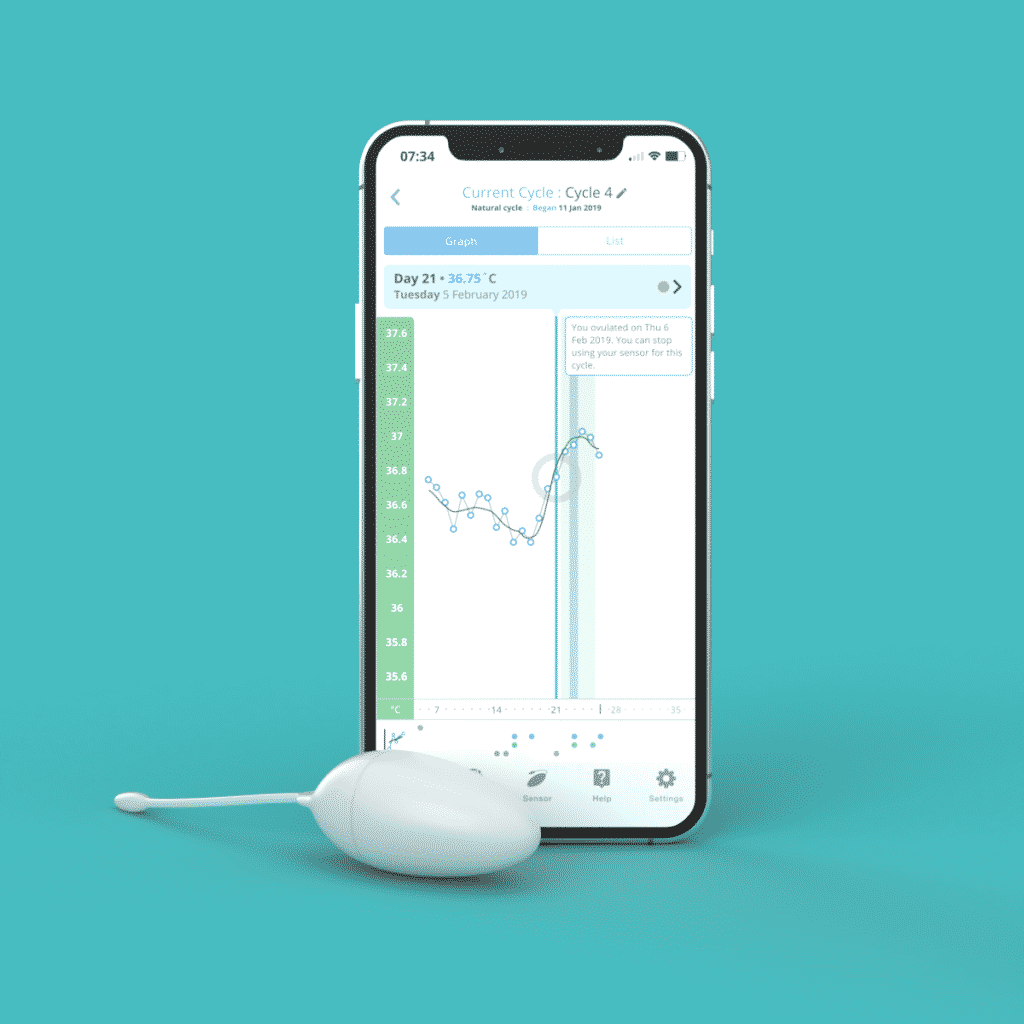
Similar to Ava, OvuSense’s fertility monitor will do all the work for you while you sleep. But what sets OvuSense apart is that it measures your Core Body Temperature (CBT) which allows it to track daily fluctuations in progesterone, a hormone that is released during ovulation and needs to be sustained in the second half of your cycle to help you conceive.
With this progesterone pattern, OvuSense uses it to predict your ovulation up to 24 hours in advance, confirm the exact date of ovulation, and monitor your individual pattern from cycle to cycle. Because it uses in cycle data for tracking ovulation versus a calendar-based method, OvuSense is one of the few devices that works for women with irregular cycles or PCOS.
How does the OvuSense ovulation tracker work?
To get started, you will insert the OvuSense sensor into your vagina overnight, which will fit comfortably like a tampon. Throughout the night, it will measure your CBT every 5 minutes. In the morning, you will remove and clean the sensor before downloading its data to the OvuSense app. It will take just a few days for OvuSense to be able to predict your ovulation up to 24 hours in advance. Even if you experience irregular cycles, OvuSense will still be able to make an accurate prediction.
So, is OvuSense legit? Well, we do like the fact that the company has published several clinical studies. For example, in the medical journal called Fertility and Sterility, there is a small study of 21 women, the core body temperature fertility monitoring and prediction strategy that the OvuSense devices use showed that it was able to closely track the women’s ovulation cycle. While this isn’t a big study, we like the fact that the company has several studies published and seems to be relying on real science.
How accurate is OvuSense?
OvuSense says it will confirm ovulation with 99% accuracy, which can help you diagnose any issues and track the effect of any medication you might be taking. Three days after you ovulate, OvuSense will confirm the exact ovulation date. You can also continue monitoring your progesterone levels during your luteal phase.
The only time you should not use OvuSense is during your period. When you begin again, OvuSense will then predict the 8 days that you are most likely to conceive in the cycle. OvuSense will update the data in real-time during the cycle, replacing the 8-day “long-range” to a 4-day “short-range” window.
Additional benefits of OvuSense is that it works for PCOS, DOR, or any cycle. We think this is a pretty big deal, since women with these conditions can have serious challenges when trying to conceive.
Additionally, when you buy an OvuSense subscription, you will also receive a free fertility nurse consultation after 3 cycles, access to free online clinics from fertility experts, access to a dedicated OvuSense Users Facebook Group. If you want to discuss this with your doctor or partner, it is easy to share the data in real-time through the app.
What is OvuSense Pro?
They also just launched OvuSense Pro, which allows you and your doctor to access all your OvuSense cycle information in detail through an online portal. In addition, OvuSense Pro provides key analysis about your cycle patterns. This analysis will help your doctor know whether they need to carry out further tests, how to tailor your treatment if you already have treatment or need it, and to monitor the effectiveness of that treatment.
FYI: 20% of the money spent with OvuSense will go toward funding fertility clinical research and development. If you choose to purchase OvuSense, it’s easy to extend your existing subscription. A 30-day subscription costs $35, and you can renew every 30 days and cancel whenever you like. You can also purchase a 12-month subscription at $210, which is a 50% discount compared to the 30-day subscription. You can save an additional 20% with code FINVSFIN20.
What are customers saying about Ava vs Mira vs OvuSense?
Ava’s website debuts multiple success stories and even has a trending hashtag #avawomen to share how Ava has affected them. Ava’s Amazon reviews told a slightly different story, where one of the biggest complaints was the bracelet was very poor at holding a charge. Other reviews said that the bracelet was more useful if you are trying to conceive, rather than helping you understand your cycles. We think that’s great, since we are reviewing the effectiveness of Ava, Mira, and OvuSense for women trying to get pregnant!
According to a review on Parentology, “For those only interested in tracking their cycle, the price-point might not be budget-friendly with other apps available on the market. But, if you’re looking to have a baby, then Ava may be a helpful companion in your journey.”
However, overall most people really enjoyed the convenience and ease of use with Ava’s bracelet.

As for Mira’s fertility tracker, all reviews were rated a 3 and higher on Reviews.io. For most people the shortcomings of Mira’s product had to do with interpreting the data, the potential for errors to come up on the analyzer, and technical glitches.
But for the most part, everyone is enjoying the results of Mira. Even for women who are currently not looking to conceive, the Mira kit seems to be great at helping them better understand their bodies.

Finally, there’s OvuSense. Their blog features case studies of women at all stages of their journeys to conceive who talk about the value of the device for learning more about their specific cycle. According to the Happy Healthy Mumma, she “would, without hesitation, recommend OvuSense to anyone wishing to conceive quickly and naturally.”
Some of the more critical reviews of OvuSense come from customers who weren’t able to use the product because they could not activate their subscription (and couldn’t get in touch with support). It’s worth noting that OvuSense offers round the clock technical and chart support seven days a week, plus a dedicated OvuSense Users Facebook Group to assist users as they’re getting started.
For one OvuSense user, she experienced minor issues but ultimately loved the product because of how much she was able to learn about her body by using it.
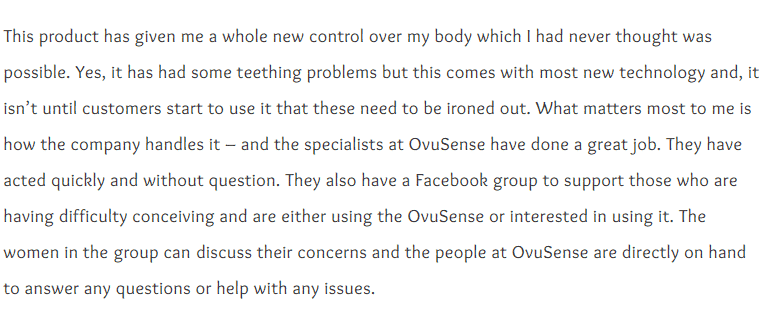
The Verdict: Which ovulation tracker should you choose -- Ava, Mira, or OvuSense?
All of these ovulation trackers offer great benefits, providing women with the optimal 5-day fertile window.
Perhaps the biggest difference between these, if you are a normal, otherwise healthy woman who doesn’t have a condition like PCOS, is how you use the Mira, Ava, or OvuSense trackers, and how well they will fit into your current lifestyle.
OvuSense requires you to insert the device regularly at night – for some women, this may not be a problem at all; others may find this intrusive. Mira requires you to collect urine samples (something any female who has been to the doctor has had to do!) If you are comfortable with that, then Mira is a very, non-invasive option. Finally, Ava is a bracelet that you need to remember to use every night and synchronize to your phone in the morning. Not challenging to do, but it does require you to remember to use it every evening and to do the sync in the morning.
Mira and OvuSense provide more versatility in that they can be used even if you have PCOS or irregular cycles. However, the Ava bracelet is a more straightforward option that’s effective if your main objective is to simply conceive. If you are willing to splurge a bit, OvuSense will be able to provide you with the most accuracy, in addition to being able to predict your ovulation a full 24 hours in advance.
Mira has a few extra benefits in addition to providing your 5-day fertile window: it also provides information about your hormone, stress, and sleep levels. OvuSense goes above and beyond by measuring your Core body templates using a specifically designed sensor, providing you with more insights about your body’s overall health.
At the end of the day, you should choose the tracker that will most help you with what you are looking for, whether that’s tracking your cycles, understanding your body, or having a baby. We love the robustness of OvuSense, but realize it’s relatively expensive. For those on a budget, your choice between Ava and Mira will likely come down to your preference of bracelet vs pee sample.
Let us know about your experiences with ovulation trackers in the comments below!

And get exclusive discounts!
Save big on the latest fertility products
Our team has tried and rigorously tested many of the most popular fertility testing apps out there. See which our medical advisory team likes most and enjoy exclusive discounts.

Discover more fertility products

How to Keep Your Balls From Shrinking While on Testosterone
Key Takeaways Testicular shrinkage is a known, but avoidable side effect of TRT. Studies show that other treatments, like human chorionic gonadotropin (hCG) and Clomid
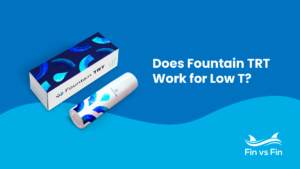
Fountain TRT Review 2023 — Is It Legit for Testosterone Therapy Online?
Fountain TRT offers prescription testosterone cream and injections for individuals who have been diagnosed with low testosterone (low-T) levels, which is also called testosterone deficiency

Best Post Vas Sperm Test at Home – What’s The Easiest Way to Verify a Vasectomy?
Vasectomies are supposed to deliver sexual freedom. You have your sperm-carrying tubes closed and don’t have to worry about pregnancy again, right? Not so fast.

How To Get Abortion Pills Online
Home › Telemedicine › How To Get Abortion Pills Online Reviews Abortion pills are a safe and effective way to end a pregnancy. They are

Where To Buy Clomid Online – Compare Testosterone Clinics, Pricing, & More
Some males choose to take Clomid to treat infertility or to increase focus, energy, and muscle mass. However, Clomid is only indicated for men who

Maximus Testosterone Review: Is It an Effective TRT Alternative?
It is not unusual for men to experience a drop in testosterone levels as they age. This is often accompanied by decreased energy levels and


